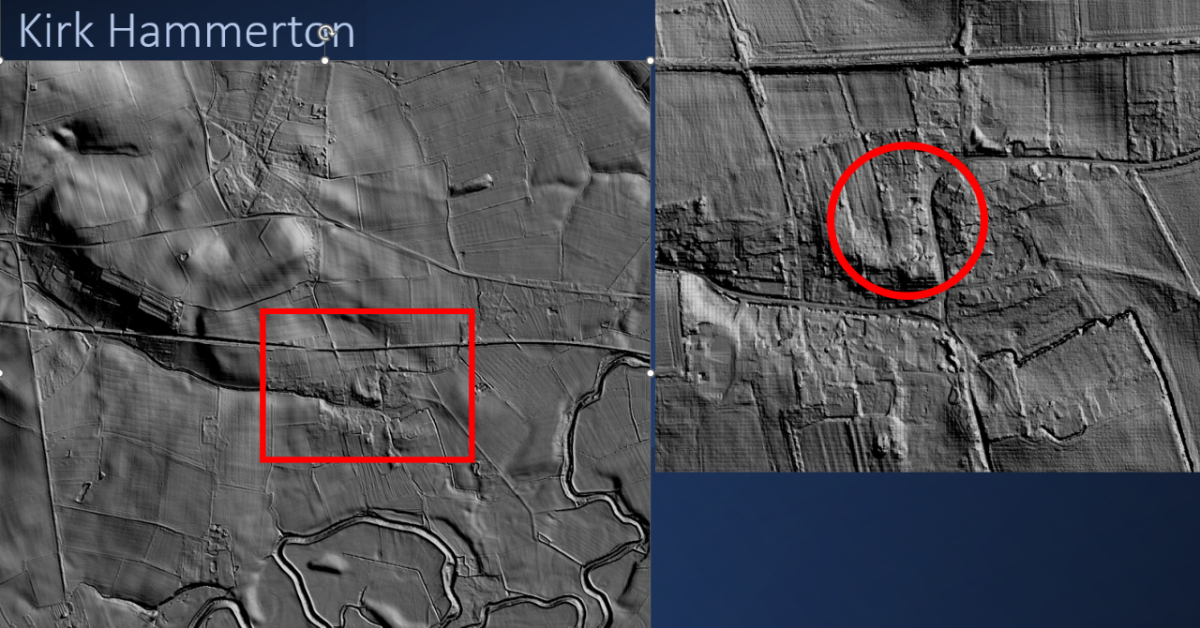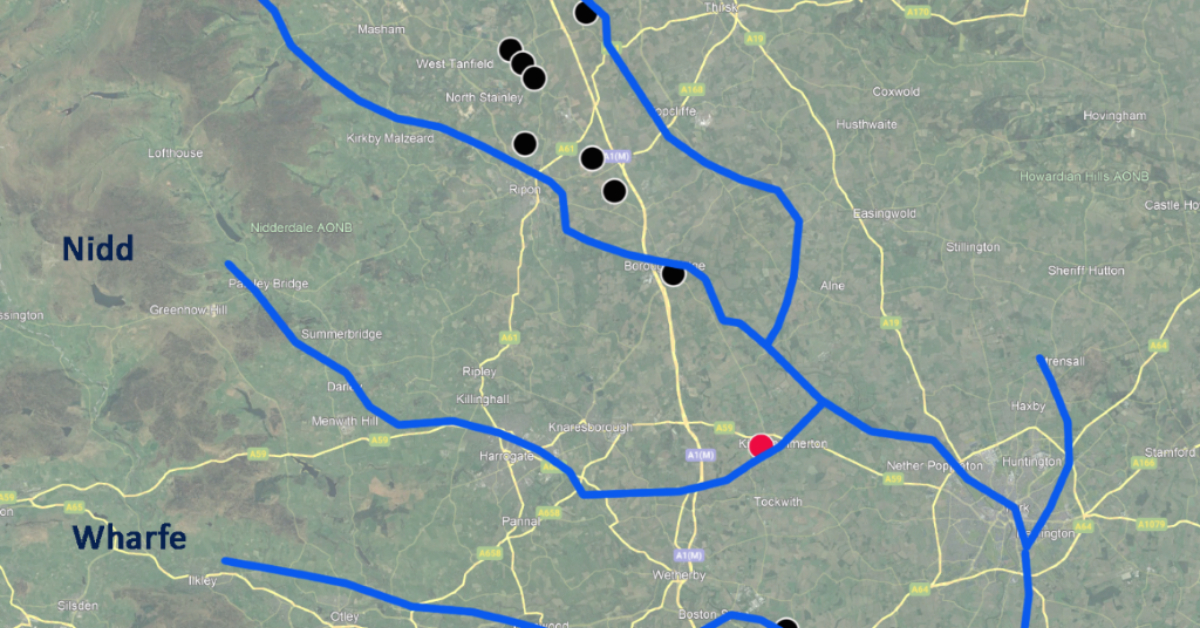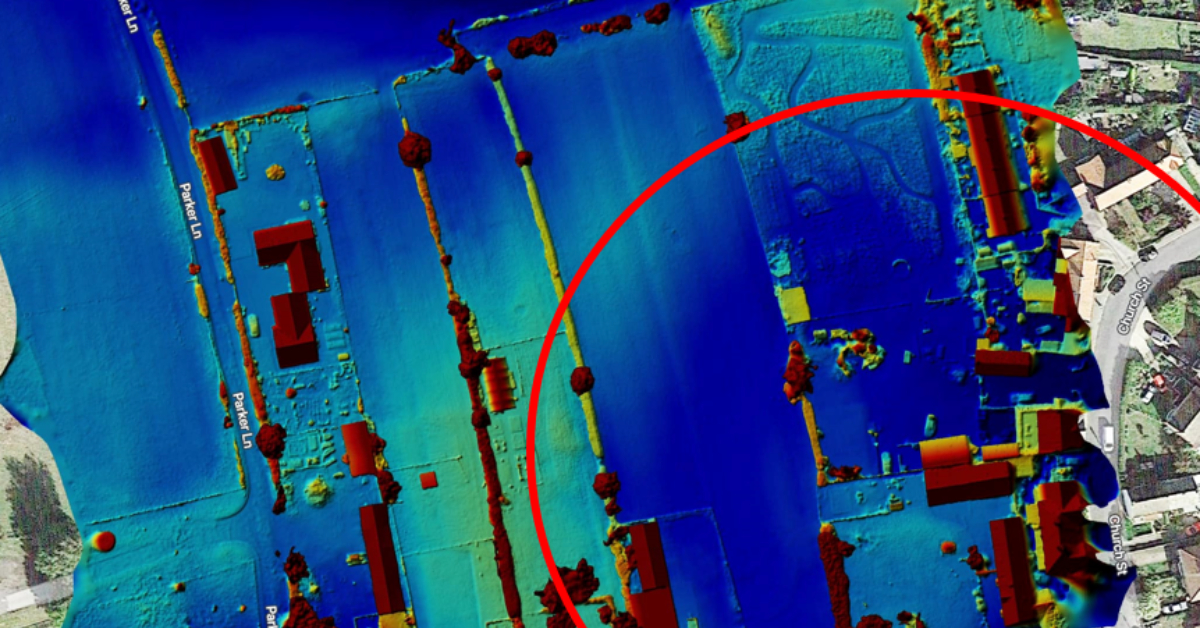A previously undiscovered prehistoric henge may lie under a Harrogate district village, a packed meeting was told this week.
The massive earthwork, 170 metres in diameter and thousands of years old, was revealed beneath the village of Kirk Hammerton using state-of-the-art multispectral drone imagery techniques by Tony Hunt, who said the find could be “nationally significant”.
He presented his findings, along with community archaeologist Jon Kenny, at a public meeting of local residents and amateur archaeologists in Kirk Hammerton village hall on Monday. Mr Hunt said:
“The meeting was absolutely astounding. Usually, these things attract maybe 20-30 people, but we had 120 – there were people sitting on the floor, and there were 30-40 who couldn’t make it on the night but want to get involved.
“Everybody seems to be very enthusiastic about it being a new henge. I’m healthily sceptical, but it’s definitely worth a look. If this is confirmed, it will be nationally significant.”
A henge is a ring-shaped bank and ditch, usually built around 4,500 years ago for purposes that remain unclear, although experts speculate that they probably had religious or spiritual meaning for ancient communities.

A black-and-white image of the suspected henge, taken from a drone by Yorkshire Archaeological Aerial Mapping.
There are currently known to be 10 henges in Yorkshire, six of them aligned along a northwest-southeast axis, including the group of three at Thornborough, north of Ripon. The latest discovery, a possible 11th, lies in alignment with these.
Mr Hunt said:
“Whether these henges are aligned intentionally is up for debate, since for that to hold up you have to disregard quite a few of the others. It may just be that they are positioned along river valleys.
“They may have been tribal centres, or where the gods live – no people lived in them. They may have represented the border between life and death – at sunset, someone the height of the average Neolithic person standing in the centre of one of these henges casts a shadow pretty much exactly the same length as its radius.”

A map showing how the most recently discovered henge lines up with several of the others in North Yorkshire, including the three at Thornborough.
Mr Hunt and fellow enthusiasts now plan to explore further at Kirk Hammerton, using geophysical mapping and ground-coring techniques. He said:
“In a henge, the ditch is on the inside of the earth bank, so we’ll see if we can spot that. If we see something that looks like one, we’ll probably put in a huge long trench from the centre out, through the ditch and earthwork to create a cross-section.”
Mr Hunt has a degree in archaeological sciences from Bradford University and is currently managing director of DJ Assembly, a York-based micro-electronics company. He also runs Yorkshire Aerial Archaeological Mapping, whose thermal and infrared imaging technology revealed the henge. He said:
“Ten years ago, we thought there were only five henges here in Yorkshire. Now we know there are at least 10. There will be more, I guarantee it.”
Using his drones, Mr Hunt has recently discovered lost Bronze Age burial mounds and two new Roman marching camps, both in the Vale of York, as well as mass graves at the site near Northallerton of the Battle of the Standard between England and Scotland in 1138.
Earlier this month, it was announced that two sections of the Thornborough henges, which lie 30 miles to the north-west of Kirk Hammerton, have been donated to the public body Historic England.
Read more:
- Ripon’s ‘Stonehenge of the north’ gifted to nation
- Angry Minskip villagers fight developer over possible Roman site
- Developer withdraws plan for 55 retirement homes in Kirk Hammerton






